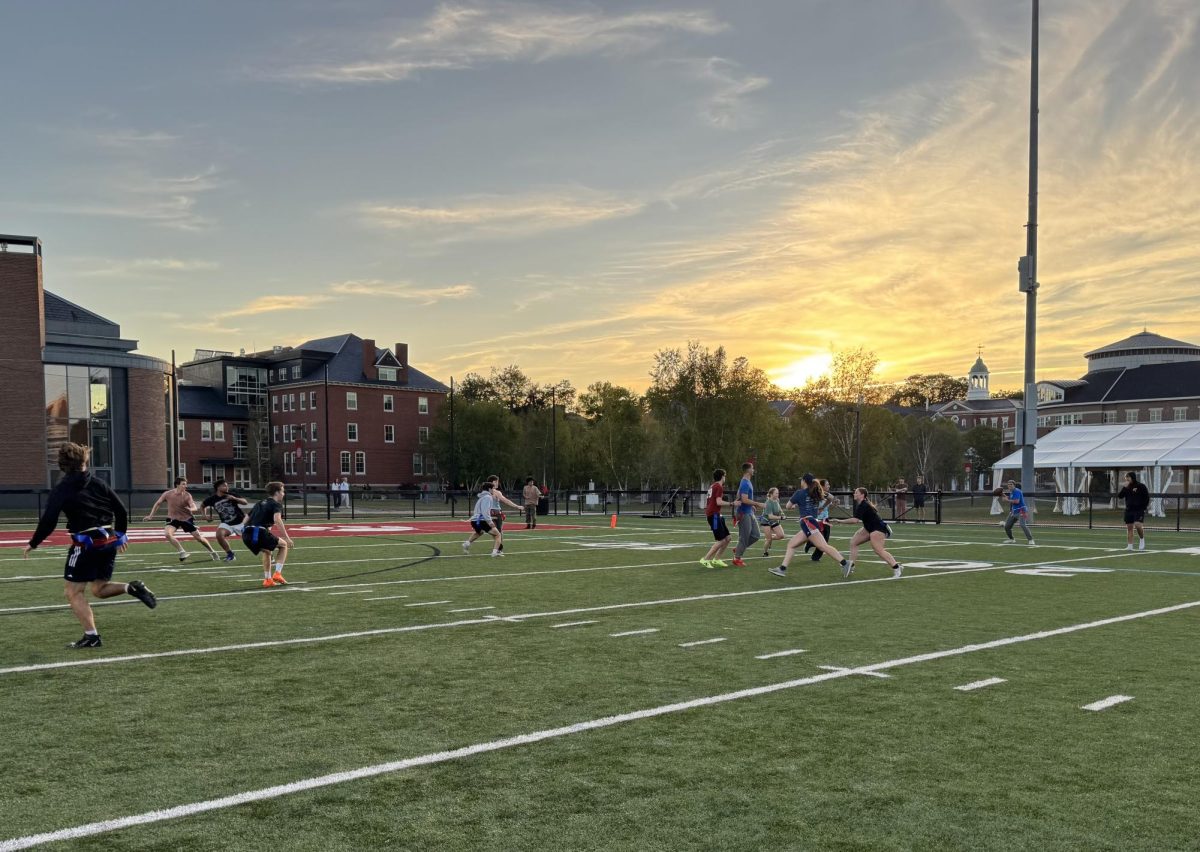On January 7th, 2007, the SEC was just the Southeastern Conference, an unknown commodity in a college football world that lionized coaches who pounded the table about the merits of size and strength, and of the ability to line up and run the football, and the supposedly miniscule chance that the speed of the Southeastern Conference could match up with the brute strength of, well, everyone else.
On January 7th, 2007, people scoffed at the idea that the spread option could even exist in major college football. They laughed at my Florida Gators, mocked the fact that they had the audacity to even line up against a program like THE Ohio State University.
 On January 8th, 2007, a dynasty was born.
On January 8th, 2007, a dynasty was born.
January 8th was the day that the Southeasten Conference grew up and became the SEC. It was the day that the old conventions of size and strength were replaced by speed and athleticism, and the axis of power in college football shifted from somewhere in the Midwest to smack in the middle of the South.
Try as the rest of the country might, that axis hasn’t shifted since January 8th, 2007. Oh, there have been valiant and worthy challengers, but all amounted to nothing more than quixotic dreamers; knights riding up a mountain only to be roasted alive by the dragon lurking at the top.
The Big 10 came back for another helping of SEC pie the very next year, only to have Ohio State get blown out for a second consecutive time, this time by LSU. Then the Big 12 wanted a turn and sent Oklahoma, only to have the highest scoring offense in history get neutered by Tim Tebow’s powerful 2008 Florida squad (as if I wouldn’t find a way to include the Chosen One).
The following year, they sent Texas, who left with a broken quarterback and a shattered psyche after being brutalized by what now we know was the first team in Nick Saban’s current Alabama dynasty.
The Pac-12 finally broke into the championship mix in 2010; Oregon’s reward was facing Cam Newton, who did just enough to extend the SEC’s streak to five.
The SEC decided it was tired of toying with the rest of college football, so in 2011, it sent two teams to the championship game. Alabama (sensing a trend?) whitewashed LSU, 21-0.
That brings us to the most recent affirmation of the SEC dynasty, and for me, the most satisfying (games involving Florida notwithstanding).
I am referring, of course, to the event between Alabama and Notre Dame that took place on January 7th. To call this event a game seems strange; this “game” was over by the end of the first quarter, and the second, third, and fourth quarters were spent hoping for another shot of Alabama quarterback AJ McCarron’s girlfriend, if only so viewers could be treated to another Brent Musberger meltdown as he fawned over a woman roughly fifty years his junior. If you are a male who somehow did not see the ten million shots of Ms. Katherine Webb that ESPN displayed in the final three quarters of that game, give it a Google (or a Bing, if there’s anyone on earth who actually does that) and thank me later.
But I digress. The national championship game this year told us several things. These are things that we should not have forgotten, but that some people have in the era of the 30-second news cycle and the unceasing search for the next storyline.
The first truth: the SEC dynasty is as strong as ever. The whispers that the conference has an overinflated view of itself grew louder this year, and intensified following Florida’s admittedly gutless loss to Louisville in the Sugar Bowl.
ESPN ran dopey articles claiming that the SEC was “top-heavy” and other conferences were deeper, even as the SEC’s fifth-best team (Texas A&M) took a giant, steaming you-know-what on the Big 12’s second-best team (Oklahoma) and Jadeveon Clowney obliterated the entire state of Michigan with one hit (again, worth a Google).
However, the sheer lack of resistance Alabama faced in dismantling Notre Dame’s best team since 1988 should reestablish the idea that the SEC is on a different level than the rest of the country. That a national championship containing what are supposed to be the two best teams in the country can be so one-sided clearly illustrates something about the victors. The fact that multiple SEC teams have been on the right end of a blowout (Florida, LSU, and Alabama, twice) demonstrates that regardless of which team the SEC spits out at the end of the year, it will be significantly better than the overmatched opponent lined up on the other side of the ball. The reality is that until someone knocks the SEC off of the mountaintop, this league remains the Rome of college football. And whatever analysts or casual observers say, there is no rebuttal for the friendly reminder that the SEC has won the last seven national championships, has never lost in the championship game to a non-SEC team, and has shown no signs of slowing down.
The second, more immediate truth: Notre Dame is not back, and you’re a fool if you thought they were. If Notre Dame is “back”, then so are bell-bottoms and afros on white people. This isn’t to say that Notre Dame didn’t have a good season, because they did. They still did go 12-1, and they still did have the program’s best season since 1988. To give you an idea of how long ago that is, we were best buds with Al Qaeda back then. So yeah, it’s been a while coming for the Golden Domers.
But still. It took Alabama less than three minutes to completely blow up what ESPN had spent almost a month and a half carefully crafting: the idea of Notre Dame as a legitimate contender. Three minutes is all the time it took Alabama to take the opening kickoff, march down the field into the end zone, and make it very clear that Manti Te’o’s bunch should have needed VIP passes to get onto the field of Sun Life Stadium that night.
So no, Notre Dame is not back. Maybe they will be in 2013; they’re certainly a team to keep an eye on. But they’re not back until they can show up on the national stage and avoid soiling themselves before the national anthem is done playing.
The third, and final truth: to paraphrase the great philosopher and booty club frequenter 2 Chainz, Alabama (and by extension, the rest of the SEC) is different. They’re different in the sense that when they get up in the morning, they think about winning. When they eat meals, they think about winning. When they’re with their family or friends, they think about winning. Winning is all Nick Saban and his players care about, and it’s why they are head and shoulders above everyone else in the country right now. I realize this article is more about the continued dominance of the SEC as a whole, but the team that has won three of the last four national championships and the coach who adheres as closely to Bear Bryant’s dictatorial style as one possibly can in today’s extra-sensitive era deserve unlimited praise. Nick Saban is a living legend, and I am thankful that I get to watch him coach in his prime.
But what about 2013 and beyond? Alabama will lose a lot, but the replacements stepping in are better than most teams’ first-stringers.
Florida was a fumble away from being in the title game this year; they’ll be a threat, along with Georgia, LSU, Texas A&M, and South Carolina. Put simply, the SEC will be fine. Call it homerism, but I think the only way the SEC is left out of next year’s BCS National Championship game is if the league cannibalizes itself and Oregon and another team (Ohio State, perhaps?) remain undefeated.
The championship process will get more SEC-friendly in 2014, when a four-team playoff arrives. Don’t think that favors the SEC? Three of the top four teams (and six of the top ten) in the final regular season BCS standings this year were from the SEC. A playoff certainly gives more teams a chance at a national title, but it is likely that the majority of those teams will be from the Southeastern Conference. As incredible as the last seven years of SEC dominance have been, it’s possible that the league is far from finished atop its throne.
There is a saying that states, “It’s not the destination, but the journey that matters”. If January 8th, 2007 was the beginning of the SEC’s journey, January 7th, 2013 was merely another point along the way. In fact, as far as I can tell, the SEC’s journey is far from over, with no end in sight.







